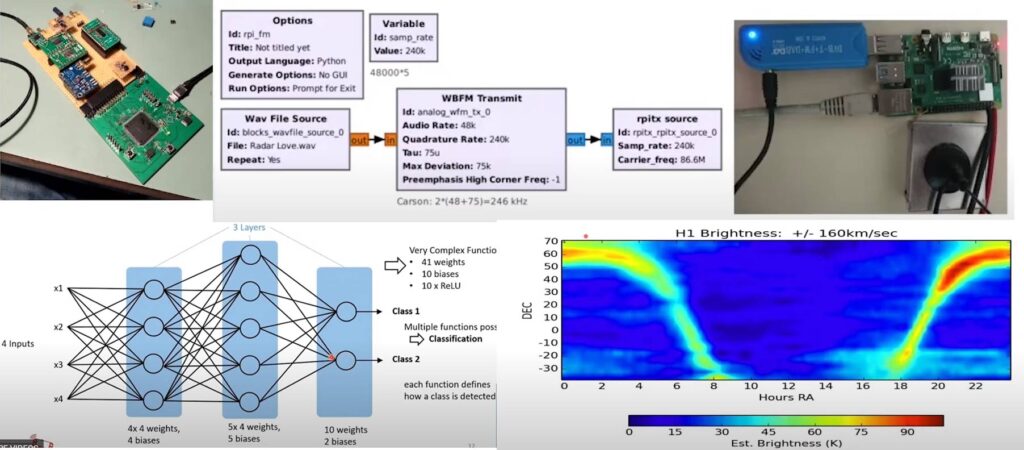The 2021 Software Defined Radio Academy conference was held online this year on June 26/27 and the talks have been recently uploaded to YouTube. There are some interesting talks this year including a presentation on various SDR related topics including Electrosense, gr-rpitx, 21cm radio astronomy with low cost SDR hardware, and using deep learning neural networks for automatic signal identification. Our favorite talks and blurbs are collected below for easy access, and the full set of talks can be found on their YouTube channel.
Dr. Henning Paul: Building a flexible Multi-Antenna-capable SDR using open Source
The availability of Open Source software components enables the ambitious hardware hacker to design their own powerful SDR. This talk is the follow-up to the talk on Scientific SDR and recapitulates the steps towards the current design of a Homebrew SDR based on a Xilinx Zynq SoC using the Linux kernel and other Open Source components. Furthermore, one of its applications, receiving shortwave radio with antenna diversity is presented.
SDRA2021 - 04 - Dr. Henning Paul: Building a flexible Multi-Antenna-capable SDR using open Source
Jean-Michel Friedt: GNURadio compatible gen. purpose SDR emitter using RasPi4 PLL
GNU Radio, the Raspberry Pi single board computer and Digital Video Broadcast Terrestrial receivers make an awesome combination for educational purposes of Software Defined Radio. gr-rpitx aims at complementing these tools with emitting capabilities, combined with the flexibility of GNU Radio.
SDRA2021 - 08 - Jean-Michel Friedt: GNURadio compatible gen. purpose SDR emitter using RasPi4 PLL
Sreeraj Radjendran: Knowledge extraction from wireless spectrum data
In this half-hour talk, the need for large scale wireless spectrum monitoring will be discussed. A short introduction to a large scale wireless spectrum monitoring framework, Electrosense, will be given. Furthermore, how anomaly detection and signal classification can be performed using the collected data will also be discussed. Insights to the major problems with state-of-the-art machine learning models will also be discussed in this context.
SDRA2021 -11- Sreeraj Radjendran: Knowledge extraction from wireless spectrum data
Stefan Scholl, DC9ST: Classification of shortwave radio signals with deep learning
Automatic mode classification of radio signals in the HF band is a valueable tool for band monitoring, operation of rare transmission modes and future applications of cognitive radio. In recent years, machine learning has established as a general and very powerful approach to classification problems. The presentation first provides an introduction to neural networks and deep learning. Then neural nets are applied to the task of radio signal classification. The result is an experimental deep convolutional neural net (CNN), that can distinguish between 18 different transmission modes occurring in the HF band, such as AM, SSB, Morse, RTTY, Olivia, etc.
Additional Links: Stefan Scholl's post on this topic
SDRA2021 -12- Stefan Scholl, DC9ST: Classification of shortwave radio signals with deep learning
Marcus Leech: Mapping the sky at 21cm: Gnuradio and Radio Astronomy
We show the results of a year-long sky survey at the 21cm hydrogen line, producing an intensity map of the sky covering a declination range from -35 to +75DEG. We discuss the software tools used, Gnu Radio signal flows, and the hardware aspects of the instrument.
SDRA2021 -14- Marcus Leech: Mapping the sky at 21cm: Gnuradio and Radio Astronomy

